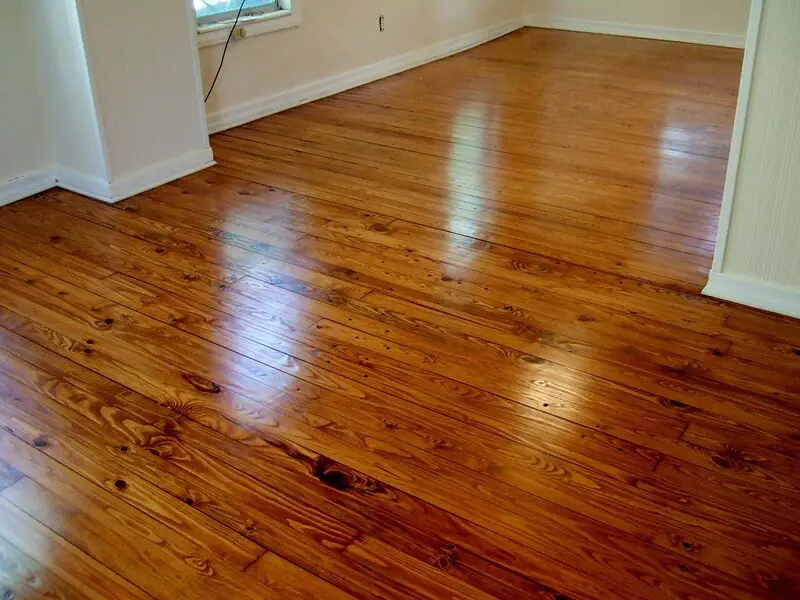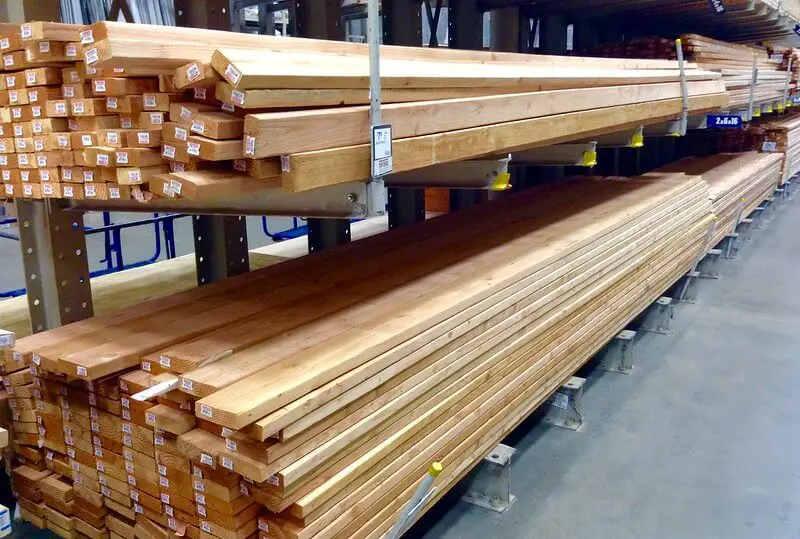There are so many different species of timber (lumber) that it may seem challenging to decide where to start when selecting. Your choice will depend on several factors, including cost and availability. It is well worth tracking down one or more suppliers who understand the needs of woodworkers and striking up a good working relationship with them. Here’s how to select and store lumber.
How to Select wood
Many stockists are set up to provide for the construction trade and do not take politely to requests for small batches of less common types. On the other hand, sometimes bargains are to be had from such companies when they are left with short lengths of wood (sometimes sold as shorts or short ends) that are less useful to the trade. Also, consider that boards with constructional defects, areas of sapwood, or wild, knotty grain can be used to good decorative effect if selected carefully. Here is a selection checklist.
Workability
Some lumber is noted for being quickly worked, with a low cutting resistance and blunting effect on tools. They tend to be quite bland in appearance but are ideal for making solid frameworks where accurate jointing and stability are essential. Straight grain gives good glued joints and resistance to splitting when nailed or screwed. This lumber can be obtained at a relatively low cost.
Read Next
- How to Keep Plywood Doors from Warping
- Straighten Wood with Water
- Seasoning Wood for Carving
- How to Prepare Wood for Carving
- Best Woods for Carving Using a Dremel
- How to Treat Wood for Outdoor Use
Finish
Not all species of wood will take a good finish – if the grain is very coarse, the surface can “pick up,” requiring a lengthy process of filling the grain and rubbing it down to produce a good result. Some wood types, such as teak, have a natural oi ly content that inhibits the bonding of the finish. Over the years, some woods have become highly prized for their lustrous qualities and ability to take a high polish. Naturally, they tend to be more expensive and hard to obtain.

Although certain wood species are specified for many projects on this website, the information should be used as a guide. Quite often, the first stage in deciding what to make is to consider what timber is available and how its potential can be fully realized, rather than sticking to fixed ideas. Rarely a substitute wood cannot be found that possesses the desired properties.
Durability
Lumber should be selected for durability if it will be exposed to moisture outdoors and in areas of high moisture or condensation, such as kitchens and bathrooms. Sapwood is not durable and is prone to staining in most lumber, but even the heartwood of some trees is vulnerable. Hardwoods, and softwoods such as cedar and yew, are highly resistant to rot from moisture because of their oily nature.
The density of wood (expressed as kilograms per cubic meter or pounds per cubic foot) is not only a measure of its relative weight but is also linked to its strength and durability. Where these are important, your choice of species should reflect this. Bear in mind that most figures quoted are based on averages at a fixed moisture content, and the density of a single piece of wood can vary depending on its origin and growth conditions.
How to store wood
Many woodworkers will hoard lumber. A piece of prime quality will be set aside until the right job comes along or because it is “too good to use.” There is nothing wrong with this, provided you have the space: the lumber will come to no harm if stored correctly and in conditions and may even improve with age. Do not let this hoarding instinct get out of control. Please keep track of your stock and manage it sensibly. Record the origin and date of purchase of each bunch and do not mix them in the same piece of work.
How to store wood (Watch video below)
How should you store lumber to prevent warping?
To prevent warping in lumber, proper storage techniques are essential. Here’s how you should store lumber to minimize the risk of warping:
- Flat and Supported: Store lumber in a flat and supported position, either horizontally or vertically. Ensure that each piece is fully supported along its length to distribute weight evenly.
- Even and Level Surface: Use a flat and level surface for storing lumber. Uneven surfaces can create pressure points, leading to warping.
- Air Circulation: Allow for adequate air circulation around the lumber. Avoid tightly stacking or overcrowding the pieces, as this can restrict airflow and trap moisture.
- Stickers or Spacers: Place stickers or spacers between each layer of lumber. These thin, evenly spaced strips of wood help promote airflow and reduce the likelihood of warping.
- Avoid Direct Contact with Concrete: Direct contact with concrete floors or walls can transfer moisture to the lumber, increasing the risk of warping. Use pallets, blocks, or other forms of elevation to keep the lumber off the ground.
- Protection from Moisture: Store lumber in a dry environment, away from sources of moisture such as leaks, open windows, or damp areas. Use a dehumidifier or air circulation fans, if necessary, to maintain proper humidity levels.
- Covered or Sheltered: If storing lumber outdoors, provide a well-ventilated, covered area or use tarps to protect it from direct sunlight, rain, or snow. Exposure to weather elements can cause moisture absorption and subsequent warping.
- Regular Inspection: Periodically inspect the stored lumber for any signs of warping, mold, or insect infestation. Promptly address any issues to prevent further damage.
By following these guidelines, you can greatly reduce the chances of lumber warping during storage. Proper storage conditions help maintain the integrity of the wood, ensuring that it remains flat and usable for your projects.
Buying wood
Over a quarter of the globe’s land area is occupied by forested regions, and we reduce it at our peril. Unlike many other materials we consume, trees are a renewable resource – it makes no sense to ignore the potential for endless supply by not replacing them as we use them. The timber (lumber) trade is becoming aware of this, and the responsible woodworker should encourage the attitude by seeking suppliers who operate environmentally sound purchasing policies.
• Timber awareness
Organizations such as the Forestry Stewardship Council (FSC) and the American Forest and Paper Association (AF&PA) are working worldwide to encourage certification schemes that promote the sustainable management of our forests. Seek out the sources of timber available to you and satisfy that your local supplier is aware of the issues involved.
The timber trade
The trade market has a tremendous responsibility, not only in fore try management and purchasing policy, but in promoting the efficient use of the raw material. Poor-quality timber can be directed toward the mass needs of industry, while the best is reserved for the most demanding use. Everyone in the supply chain, from foresters down to individual woodworkers, has a part to play in selecting the correct timber for its purpose.

When specifying and buying timber, be prepared to consider alternatives to avoid wasting a valuable resource. Some species, such as Brazilian rosewood, are already endangered and no longer commercially available; others are in short supply or are best converted into veneers. There is nothing wrong with using sheet materials manufactured from timber trimmings (wood scraps) too small to use as solid wood, to provide a stable base for veneered panels, or to make the components that will not be seen in a finished piece of work.
There are actual cost savings to be made, too, if timber of the correct size and quality is purchased_ Buying timber that has been dimensioned or re-sawn to a predetermined size saves handling large boards if you do not have the facilities. If the timber has been prepared or planned with square edges and smooth faces, it is ready to use without further machining. Bear in mind that each stage of the preparation process adds more cost. In the long term, it may pay you to invest in the space and equipment to machine your stock from rough-sawn boards, allowing you to use the stock more selectively.
Identifying Lumber
The timber trade has terminology for describing the different grades and appearance of the product. Some of the more common terms are specified in the accompanying panel; look out for them when specifying timber. There is a comprehensive range of common timbers suitable for practical woodworking. One of the first hazards to be aware of when selecting timber is that the common name for each species can be a pitfall. Various names know many species in different parts of the world or even in the same country; just as often, the same name can be applied to more than one species.
